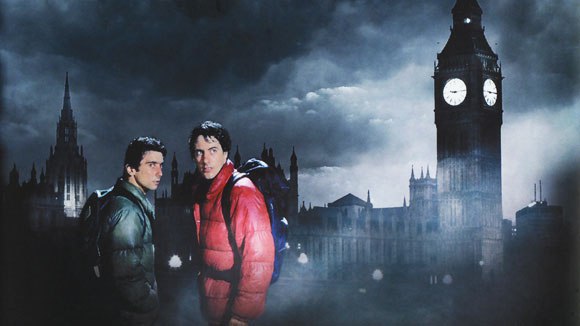 The Wolf Man. The Howling. Ginger Snaps. Dog Soldiers. In terms of werewolf horror, there are certainly some great flicks to choose from. But a recent rewatch of An American Werewolf in London has once again blown my mind and I’ve got to say: it’s bar none the best werewolf movie. Ever.
The Wolf Man. The Howling. Ginger Snaps. Dog Soldiers. In terms of werewolf horror, there are certainly some great flicks to choose from. But a recent rewatch of An American Werewolf in London has once again blown my mind and I’ve got to say: it’s bar none the best werewolf movie. Ever.
The movie follows two young Americans, David and Jack, as they’re traveling through the hills of England. The two are attacked by a werewolf and Jack is killed (not a spoiler), and David is transported to a London hospital, where he sees disturbing visions of his dead friend. Dead-Jack tells him that David is now a werewolf and will transform at the next full moon.
The movie does so many things right it’s hard to decide where to start. Directed by John Landis (Animal House, Trading Places, The Blues Brothers, Michael Jackson’s “Thriller video), the movie employs some killer special effects, especially considering its year of release, 1981. Just look at makeup maestro Rick Baker’s resume. He’s won 7 Academy Awards for Best Makeup, including this film (which was the inaugural award for Makeup), Harry and the Hendersons, Ed Wood, The Nutty Professor, Men in Black, How the Grinch Stole Christmas, and The Wolfman (2011). He also worked on “Thriller” with Landis. The man is a legend and a master.
Exhibits A and B:
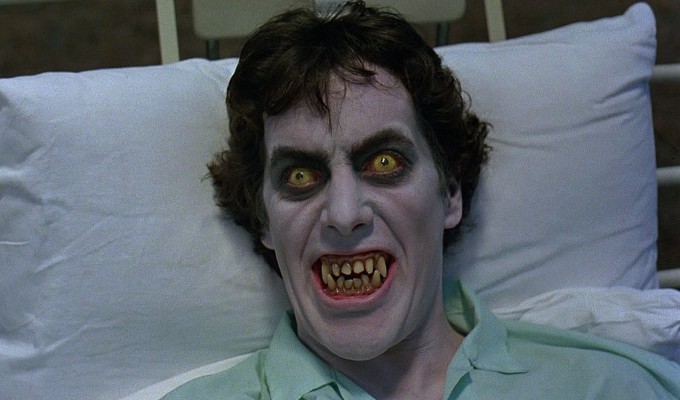
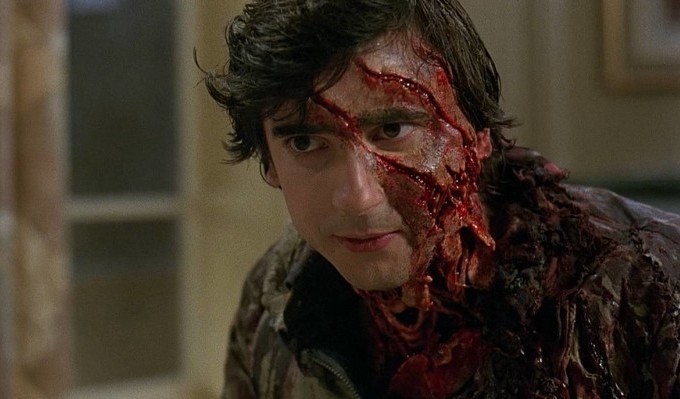 There’s a little flap of skin that constantly flaps around in the scene above. It’s that little detail in Baker’s work that goes the distance.
There’s a little flap of skin that constantly flaps around in the scene above. It’s that little detail in Baker’s work that goes the distance.
There’s lots to be said about the gore used in the film, including but not limited to apparition-Jack’s progressive deterioration, but the actual werewolf transformation is the best of its kind. Using various prosthetics and robotic parts, Baker was able to give Landis exactly what he wanted for his film: an on-film, moving transformation from man to wolf. This scene alone makes An American Werewolf in London worth it, and if you have the Blu-ray, check out the special features for an entire breakdown of this scene. Moving on…
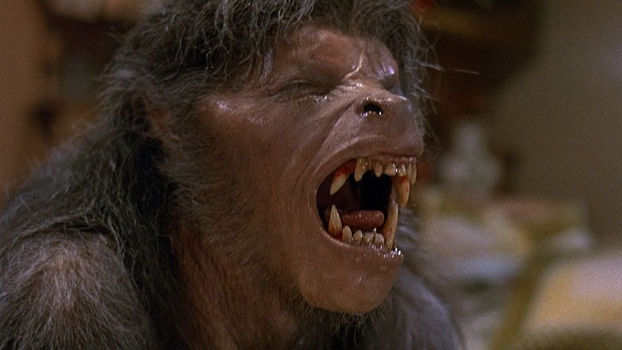
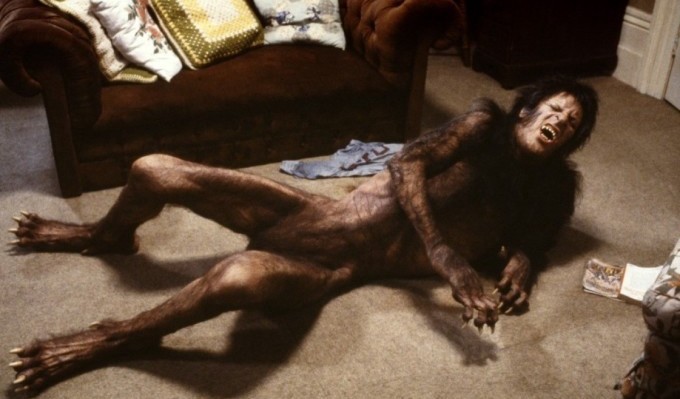 Some describe the movie as a horror-comedy and that’s most likely due to the sharp dialogue Landis wrote. The banter between the two friends just moments before Jack’s death is witty, real, relatable. We feel the chemistry between actors David Naughton and Griffin Dunne, just two buddies backpacking throughout England, and we smile and laugh with them. We feel their apprehension when they’re in The Slaughtered Lamb, just looking for a hot plate of food and a pint. We are them, and that makes Jack’s death and the movie’s ending so tragic. That’s all thanks to top notch writing.
Some describe the movie as a horror-comedy and that’s most likely due to the sharp dialogue Landis wrote. The banter between the two friends just moments before Jack’s death is witty, real, relatable. We feel the chemistry between actors David Naughton and Griffin Dunne, just two buddies backpacking throughout England, and we smile and laugh with them. We feel their apprehension when they’re in The Slaughtered Lamb, just looking for a hot plate of food and a pint. We are them, and that makes Jack’s death and the movie’s ending so tragic. That’s all thanks to top notch writing.
The end scenes in London’s Piccadilly Circus are also a sight to be seen. According to Dunne, this production was the first film to receive permission to temporarily shut down the highly-trafficked London area. The scenes are bright and glowing, yet Landis really capitalizes on the horror of having such a monster in the middle of a bustling city. There are car accidents, a bitten off head, plenty of bloodshed in the movie theater scene – it’s a thrilling climax to a movie that walked a tightrope between horror and lighter fare. The city of London, overall, was crucially important to the structure of the movie and arguably, is its own character in the film.
The music is killer too, not that it was a make-or-break element. Landis used three versions of “Blue Moon,” one by Bobby Vinton, Sam Cooke and lastly, a doo-wop version done by The Marcels. Then, he tossed in some Van Morrison (“Moondance”) and Creedence Clearwater (“Bad Moon Rising”) for good measure. Done and done.
If you’ve never seen this movie: Get on it. If you haven’t seen it in years: Rewatch it. It’s a horror classic done by a masterful filmmaker and crew. Story, gore, high-level production – it’s got it all, and it’s the best of the bunch if you’ve got a hankering for some good ol’ fashioned wolf carnage.
Grade: A


